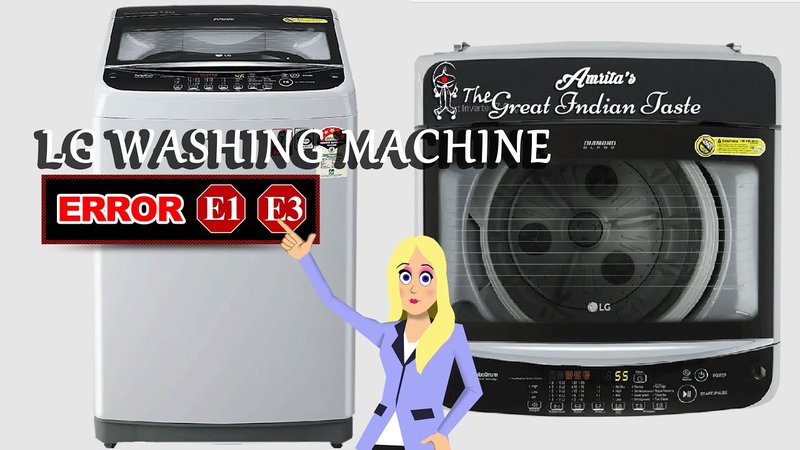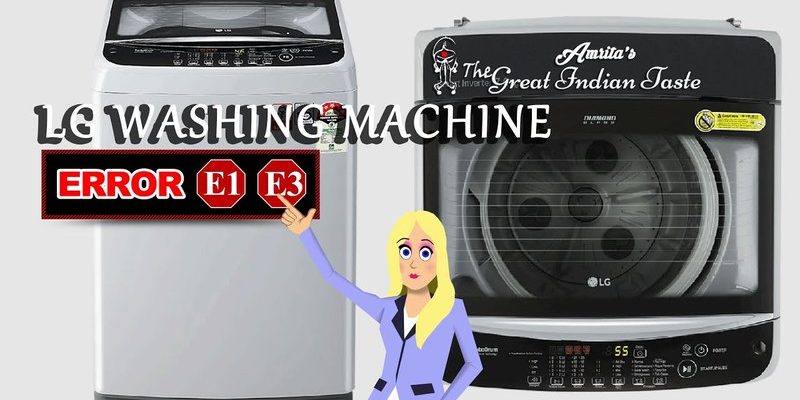
Error E1 is usually linked to a problem with water supply — think of it like your washing machine isn’t getting the water it needs to do its job, much like a car trying to run without gas. Now, you might be thinking, “Can’t I just ignore it and hope it goes away?” Well, here’s the deal. Ignoring this issue can lead to a series of inconveniences and potentially costly repairs down the road. Not to mention, your laundry will start to pile up as the machine becomes unusable. Let’s dive into what exactly happens if you leave this unresolved, and I’ll guide you on how to handle it.
Understanding Error E1 and Its Immediate Impact
First, let’s talk about what Error E1 signifies. In simple terms, your GE washing machine is having trouble getting water. This error often pops up when the water inlet valve, which is basically the gatekeeper allowing water into the machine, is malfunctioning. Imagine trying to fill up a bucket from a slow, blocked faucet – it’s similar to what your washing machine is experiencing. Without a steady flow of water, the washer simply cannot perform its basic function of cleaning your clothes.
Now, the immediate impact of this error is rather straightforward: your laundry cycle comes to a halt. The machine won’t proceed, leaving you with sopping wet clothes that smell musty after sitting in the drum for too long. Furthermore, the washer may beep intermittently, an annoying reminder that something needs your attention. It’s not just the inconvenience; over time, failing to fix Error E1 can lead to bigger mechanical issues which could mean more severe damage and a heftier repair bill.
So, what’s a washing machine owner to do? If you’re experiencing this error, first check that the water faucets are turned on, and hoses are not kinked or clogged. Simple checks can sometimes solve the issue right away. If these elements look fine, the problem might be a bit more complex, requiring a closer inspection of the water inlet valve or even the machine’s internal controls.
Long-Term Consequences of Ignoring Error E1
You might be wondering, “What’s the worst that can happen if I just keep ignoring this problem?” Well, ignoring Error E1 is like ignoring a flashing check engine light in your car. Initially, there might not seem to be a big problem, but gradually, severe issues can develop. For instance, continuous pressure on a faulty water inlet valve can cause it to break entirely, stopping all water from entering the machine. This could result in needing a complete replacement.
Additionally, ignoring this error can cause wear and tear on other parts of the washer. Overworking the motor or control board, due to repeated unsuccessful attempts to start a wash cycle, can lead to performance issues or premature failure. Imagine trying to force a door to close when there’s an obstruction; you’d wear out the hinges and latches. Similarly, not addressing Error E1 could affect the delicate balance of your washing machine’s components.
In the long run, this negligence could find you facing not just the inconvenience of a non-functioning washing machine but also higher energy bills due to inefficient operation. If the machine runs unnecessarily without completing its tasks, it’s wasting resources, which isn’t just bad for your wallet—it’s not great for the environment either.
Steps to Resolve Error E1 and Prevent Future Occurrences
So, how can you tackle this issue head-on and prevent it from cropping up again? Start with a good old-fashioned inspection. Ensure that the water supply is turned on and that the hoses connecting to the machine are free from bends or blockages. You might even want to clean the filters at the ends of these hoses, as debris build-up can often be a culprit.
If those steps don’t resolve the problem, consider checking the water inlet valve. This component can be similar to a clogged strainer in your kitchen sink; sometimes it just needs a bit of cleaning or replacement. For those who aren’t comfortable poking around with appliances, it might be wise to call in a professional. A technician can offer a thorough assessment and fix the root of the issue, preventing not just Error E1, but also other potential future errors.
To keep this problem at bay, regular maintenance is key. Checking hoses and valves every few months, ensuring they’re in tip-top shape, and being mindful of the type and amount of detergent used—too much soap can create blockages—are all practices worth adopting. By being proactive, you’re less likely to face the headache of unexpected machine downtime and can ensure your washer runs smoothly for years to come.
In conclusion, while it might be tempting to dismiss Error E1 as a minor hiccup, addressing it promptly is crucial for the health of your GE washing machine. By understanding its causes, consequences, and solutions, you’re not just saving yourself from immediate inconvenience but potentially safeguarding your appliance from future setbacks. Remember, a little maintenance now can save a lot of trouble—and laundry anxiety—later on.
